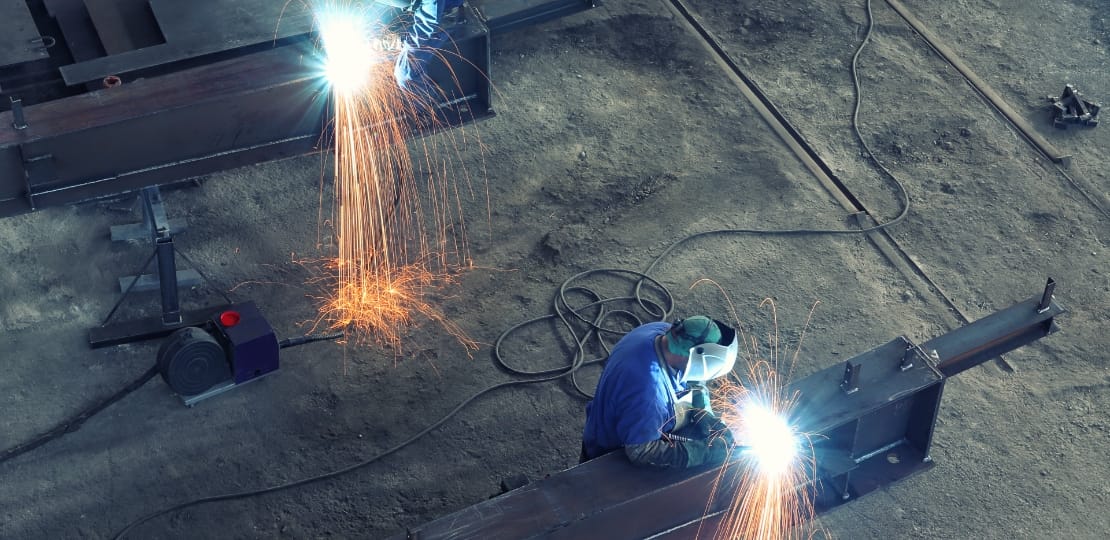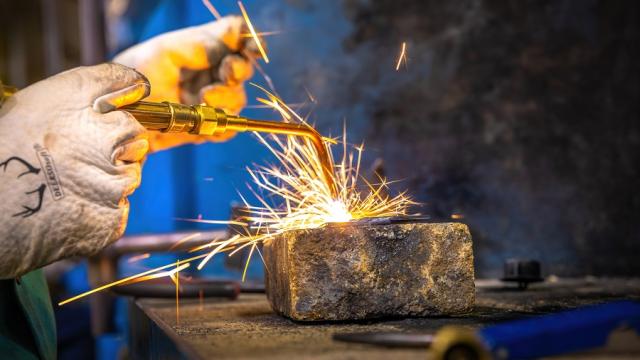Common Welding Repair Issues and How to Address Them Properly
Welding repair work usually come across a variety of issues that can endanger the integrity of the end product. Usual problems consist of inadequate infiltration, porosity, and misalignment, to name a few. Each flaw presents unique obstacles that call for specific approaches for resolution. Understanding these concerns is necessary for welders aiming to boost their skills and results. This discussion will certainly discover these common welding repair problems and efficient methods to resolve them.
Inadequate Penetration
Poor penetration takes place when the weld steel falls short to fully fuse with the base product, leading to weak joints and potential architectural failures. This problem frequently originates from not enough warmth input, inaccurate electrode angle, or inappropriate welding rate. Welders may experience inadequate infiltration as a result of a mistake of the required specifications for a particular product density or type. Additionally, contamination on the base material's surface can prevent effective bonding, aggravating the problem. To attend to inadequate infiltration, welders should guarantee suitable setups on their tools and maintain a clean work surface area. Normal examination of welds is advised to recognize any type of shortages early, enabling timely corrections and the avoidance of jeopardized structural honesty in bonded settings up.
Porosity
Porosity is an usual problem in bonded joints that shows up as small gas bubbles trapped within the weld metal. This flaw can compromise the honesty of the weld, causing lowered stamina and prospective failing under stress. Belgrade Fabrication. Porosity commonly develops from contamination, dampness, or inappropriate welding strategies, which enable gases to leave into the molten weld swimming pool. To resolve porosity, welders should guarantee appropriate surface preparation, maintain a tidy functioning setting, and make use of appropriate welding parameters. In addition, selecting the appropriate filler product and securing gas can mitigate gas entrapment. Normal inspection and screening of welds can help determine porosity early, assuring timely rehabilitative activities are taken, therefore maintaining the quality and integrity of the welded structure
Misalignment
Imbalance in welding can develop from various aspects, including inappropriate arrangement and thermal growth. Understanding the origin creates is crucial for efficient resolution. Several correction methods are available to straighten parts and guarantee structural integrity.
Root causes of Imbalance
Welding misalignment commonly stems from a range of underlying concerns that can compromise structural integrity. One primary cause is improper fit-up of parts before welding, which can lead to gaps and unequal surfaces. Variations in thermal development during the welding process can also lead to distortion, especially if the products being joined have various coefficients of development. Additionally, inadequate fixturing and securing might stop working to hold elements securely in position, resulting in motion during welding. Badly maintained equipment, including welding makers and tools, may introduce inconsistencies in the weld bead, additional adding to imbalance. Lastly, driver mistake, coming from not enough training or experience, can additionally play a considerable duty in developing misaligned welds.
Adjustment Strategies Readily Available
Addressing misalignment successfully calls for a mix of rehabilitative techniques tailored to the specific problems at hand. One usual method is using jigs or components to hold components in the proper placement during welding, making sure constant positioning. In addition, pre-heating the materials can assist lower distortion and improve fit-up. For considerable imbalance, mechanical realignment strategies, such as making use of hydraulic jacks or clamps, can be employed to remedy the position prior to welding. Post-weld warmth therapy might also be needed to alleviate stress and anxieties triggered by imbalance. Mindful examination and adjustment throughout the configuration stage can protect against imbalance issues from becoming substantial problems, promoting a smoother welding procedure and boosting total structural honesty.
Distortion
Distortion is a common difficulty in welding that can emerge from numerous factors, consisting of uneven heating & cooling. Comprehending the reasons of distortion is necessary for implementing efficient prevention strategies. Addressing this concern not just boosts architectural honesty yet additionally boosts the total quality of the weld.
Causes of Distortion
When based on the intense heat of welding, materials frequently undergo adjustments that can bring about distortion. This sensation largely occurs from thermal development and tightening during the welding process. As the weld area warms up, the material broadens; upon air conditioning, it gets, which can develop inner tensions. Furthermore, uneven home heating across a work surface can worsen these tensions, leading to bending or flexing. The type of material additionally plays a significant function; metals with differing thermal conductivity and coefficients of growth may respond in different ways, leading to uncertain distortions. Moreover, bad joint style and poor fixturing can add to imbalance during welding, boosting the likelihood of distortion. Understanding these reasons is vital for efficient welding repair and prevention strategies.
Avoidance Techniques
Efficient avoidance methods for distortion throughout welding concentrate on managing warm input and ensuring proper joint layout. Preserving a consistent heat input aids to minimize thermal development and tightening, which can bring about distortion. Utilizing techniques such as pre-heating the workpiece can additionally decrease the temperature level gradient, advertising uniform home heating. Additionally, choosing ideal joint styles, such as T-joints or lap joints, can enhance security and lower anxiety focus. Implementing proper fixturing to protect the work surfaces in position even more aids in keeping placement throughout the welding procedure. Ultimately, staggered welding series can distribute heat extra uniformly, avoiding local distortion. By applying these approaches, welders can considerably decrease the possibility of distortion and improve the overall high quality of their welds.
Breaking
Splitting is a typical problem come across in welding repair services, frequently resulting from different aspects such as improper air conditioning rates, material option, or inadequate joint prep work. The event of cracks can greatly compromise the integrity of the weld, resulting in potential failings during procedure. To resolve this issue, welders need to initially evaluate the source, guaranteeing that materials are suitable and appropriately chosen for the specific application. In addition, controlling the air conditioning rate throughout the welding Montana Mobile Welding and Repair Belgrade Welding process is crucial; rapid cooling can generate tension and bring about cracking. Appropriate joint style and preparation additionally contribute to reducing the danger. Carrying out these methods can boost weld top quality and toughness, inevitably minimizing the likelihood of breaking in finished weldments.

Incomplete Combination
A substantial concern in welding fixings is incomplete fusion, which happens when the weld metal does not effectively bond with the base material or previous weld passes - Montana Mobile Welding and Repair Fabrication. This flaw can cause weak points in the joint, potentially jeopardizing the honesty of the welded framework. Aspects adding to incomplete combination include not enough warm input, improper welding strategy, and contamination of the surface areas being signed up with. To address this problem effectively, welders must ensure appropriate pre-weld cleaning and surface area prep work, in addition to adjust their welding criteria to accomplish appropriate infiltration and combination. Regular assessment during the welding procedure can additionally aid determine insufficient blend early, enabling for timely restorative actions to boost the total top quality of the weld
Overheating
While welding repairs can boost structural integrity, overheating offers a considerable challenge that can bring about material deterioration. Too much warmth during welding can change the mechanical residential properties of metals, resulting in minimized stamina, increased brittleness, and bending. This phenomenon is specifically crucial in high-stress applications where structural reliability is extremely important. Recognizing getting too hot can involve visual examinations for discoloration or distortion, in addition to keeping an eye on temperature throughout the welding procedure. To alleviate the threats associated with getting too hot, welders should use ideal techniques, such as regulating warm input, readjusting travel speed, and making use of ideal filler materials. In addition, carrying out pre- and post-weld heat therapies can help recover material residential or commercial properties and enhance the overall top quality of the fixing, making sure lasting performance and safety and security.
Often Asked Inquiries
What Are the Typical Indications of a Welding Problem?

Exactly How Can I Check My Welds for Top quality?
To check welds for high quality, one can use visual examinations, ultrasonic screening, and radiographic methods. Each technique assures structural integrity, identifies issues, and validates adherence to specified requirements, inevitably boosting the reliability of the bonded joints.
What Safety Safety Measures Should I Take While Welding?
When welding, one must prioritize safety by wearing suitable personal safety equipment, ensuring appropriate air flow, securing combustible materials away, maintaining a tidy work space, and understanding surroundings to avoid injuries and crashes.
Can I Fix a Weld Without Renovating the Entire Joint?
Repairing a weld without renovating the whole joint is feasible, relying on the damage (Montana Mobile Welding and Repair). Methods such as grinding, adding filler material, or using a welding process can properly resolve certain flaws while protecting the bordering framework
What Devices Are Necessary for Reliable Welding Fixes?
Important tools for reliable welding repair services include a welding maker, cable brush, grinder, protective equipment, clamps, and filler products. Each device plays a vital function in making sure top quality and safety and security during the fixing procedure. Porosity typically arises from contamination, moisture, or incorrect welding methods, which allow gases to get away right into the liquified weld pool. Poorly conserved devices, including welding machines and tools, might present variances in the weld grain, additional adding to misalignment. When subjected to the intense warmth of welding, materials usually undertake adjustments that can lead to distortion. Fracturing is a common issue encountered in welding repairs, typically resulting from various aspects such as inappropriate cooling rates, product selection, or inadequate joint prep work. A considerable issue in welding fixings is insufficient fusion, which occurs when the weld metal does not effectively bond with the base product or previous weld passes.